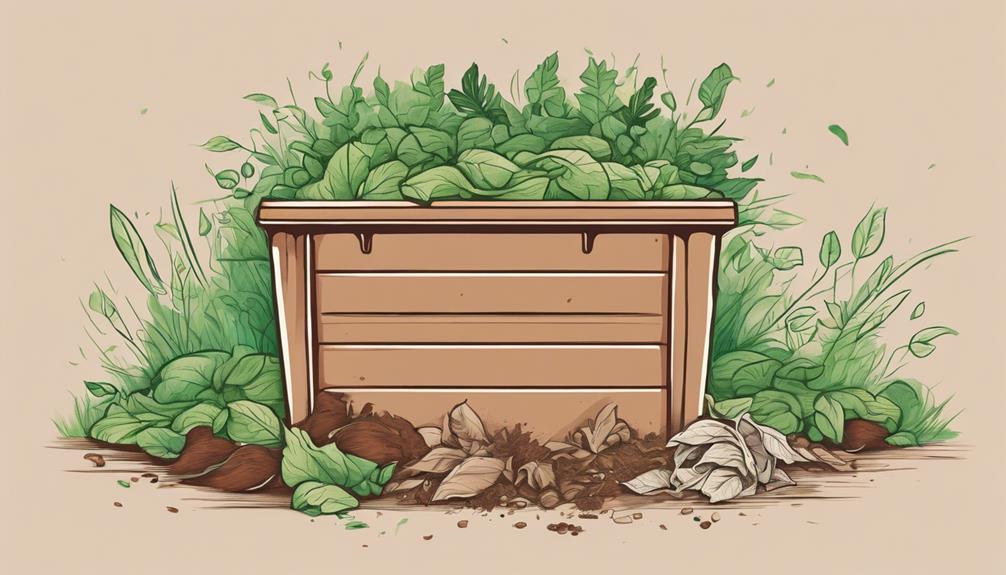How To Become More Self-Sufficient Without Starting a Full-Blown Farm…
Want to start preserving your harvest, making your own soap, or building a backyard root cellar — but not sure where to begin? “Homesteading Advice” gives you instant lifetime access to 35+ practical homesteading books on food preservation, veggie gardening, DIY natural cleaning products (save over $250 per year with this skill alone), brewing, off-grid energy, and a whole lot more…
Click Here To Check It Out Now!
“We just started a backyard farm and want to begin composting to enrich our soil. However, we’re confused about what materials to include. Can you help explain what green and brown compost materials are, and their importance? Also, any beginner tips for maintaining a good compost mix would be greatly appreciated” Thanks a lot, Lisa, Toronto, Canada.
What Are Green And Brown Compost Materials?
Composting is a fantastic way to recycle household and yard waste into rich, fertile soil for your garden. It can significantly reduce waste and benefit the environment while giving your plants the nutrients they need to thrive. Let’s break down the composting process, focusing on the crucial green and brown materials.
Understanding Composting Basics
To start with composting, it’s essential to understand that compost piles need two basic components: green and brown materials. These are the sources of nitrogen and carbon, which help facilitate the decomposition process.
Green Compost Materials
Green compost materials are rich in nitrogen, an essential element for building strong plant cells. Nitrogen helps microorganisms grow and reproduce, speeding up the composting process.
Common Green Materials
- Kitchen Scraps: Fruit and vegetable peels, coffee grounds, and tea bags. These break down quickly and provide a good nitrogen source.
- Grass Clippings: Freshly cut grass is high in nitrogen and moisture. Just be careful not to add too much at once, as it can become slimy and compacted.
- Green Leaves: Leaves that are still green and fresh. These decompose faster compared to brown leaves.
- Manure: From herbivores like cows, horses, rabbits, and chickens. Ensure it’s well-aged to avoid pathogens.
- Plant Trimmings: Fresh plant material from your garden.
Importance of Green Materials
The role of green materials is primarily to provide nitrogen, which feeds the bacteria and microorganisms that decompose the compost. Without enough greens, the composting process can slow down or become less effective. It provides the necessary protein for these microorganisms to thrive.
Brown Compost Materials
Brown compost materials are rich in carbon. Carbon provides energy for microorganisms and bacteria, balancing out the nitrogen from green materials.
Common Brown Materials
- Dry Leaves: Fallen leaves from trees. It’s best to shred them to speed up decomposition.
- Straw and Hay: Clean, dry straw and hay add bulk and fabric but decompose slower.
- Twigs and Branches: Small, dry twigs and branches. Break them into smaller pieces to decompose quicker.
- Cardboard and Paper: Shredded cardboard, paper towels, newspapers (ink should not be glossy or color), and toilet paper rolls.
- Sawdust and Wood Chips: Untreated wood only. These materials take longer to break down but add essential texture.
Importance of Brown Materials
Carbon-rich materials are crucial for composting because they provide the energy source for microorganisms and balance the nitrogen in green materials. If there’s too much nitrogen, your compost may smell bad and become slimy. Browns help with aeration and structure, creating a well-balanced compost pile.
Balancing Green and Brown Materials
Creating a balanced compost pile involves mixing greens and browns in the right proportion. The ideal ratio is roughly 2:1 browns to greens, though a 3:1 ratio is also effective if the compost becomes too wet.
Here’s how to start a compost pile:
- Layering: Start with a layer of coarse materials like twigs for aeration, followed by alternating layers of green and brown materials.
- Size: A compost pile that is at least 3’x3′ is sufficient for maintaining heat and decomposition.
- Aeration: Turn or aerate your compost pile every few weeks to introduce oxygen and speed up decomposition.
- Moisture: Keep the compost pile as damp as a wrung-out sponge. Add water if it’s too dry and more browns if it’s too wet.
- Temperature: A well-maintained pile can reach temperatures between 140°F and 160°F, excellent for breaking down materials quickly.
Composting Tips for Beginners
Starting with a compost bin is helpful for maintaining a neat and controlled compost heap, especially in a backyard setting.
- Location: Place your compost bin in a well-drained, semi-shaded area.
- Size Matters: Mix materials as you add them and keep larger pieces toward the bottom of the pile.
- Turn Regularly: Turn the compost every few weeks to keep it aerated.
- Healthy Balance: Trust your nose—if it smells bad, add more browns. If it’s not decomposing, add more greens.
Every backyard situation is unique, Lisa, so you might need to adjust the proportions slightly depending on the specifics of your climate and available materials. Regular monitoring and adjustment will help create rich, dark compost, perfect for enriching your backyard farm’s soil.
Final Thoughts…
Composting might seem a little complex at first, but it becomes second nature once you get the hang of it. Lisa, thanks for bringing up such an important topic. Remember, a mix of green and brown materials, occasional turning, and maintaining the right moisture levels will set you up for success. Enjoy transforming your kitchen and garden waste into nutritious compost for your plants!

